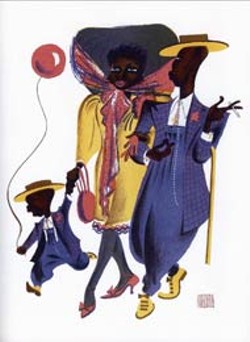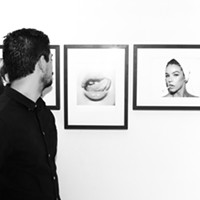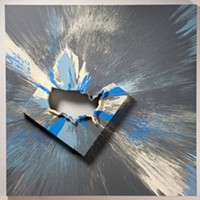Harlem in 1941 was a segregated oasis in a nearly uniform racist American landscape. For black citizens, it was a time of limbo between tacit emancipation and the future age of political correctness. Character artist Al Hirschfeld was mired in mid-century NYC by dint of birth, but psychically he lived in a better place. In his work, he slipped the quotidian shackles of bigotry and made our current squeamish concept of "politically correct" laughable. His works — drawings of life in prewar Harlem — bypass racism by simply, and profoundly, slighting the notion.
The artist did that trick with a hand and eye which bore witness to and recorded the lives of a lyrical and elegant people living large in a country engineered to make them small. Hirschfeld's Harlem denizens float, shimmy and strut above racism's gravity.
Fiction, movies, comics and low art from this era — the era of the Jim Crow and Al Jolson Show — ridiculed many of the characters Hirschfeld here celebrates. The artist makes marginal characters enviable. Seeing this show is like ripping the face off Amos and Andy to witness the unexpected release of a million fluttering doves. Look, Mama, there's an angel inside that clown.
The colored lithographs now showing at Gallery L document the artist's wanderings through Harlem in 1941. Hirschfeld grew up just north of Harlem. He said, "Harlem was as familiar and accessible to me as the blocks around your house are to you, or the fields around your homestead, or the ice floes around your igloo."
I wonder if Hirschfeld was invisible at that age. A 40-year-old Jewish guy with pen and pad sketching the Negroes and their goings-on in Harlem. No outrage, no cries of trespass? He traveled with apparent impunity, and I suspect he was visible, open and not threatening. And I suspect he was documenting a society equally open to him and also unthreatened. He wasn't worried — judging from what he drew, he was positively enthralled.
"Lindy Hop" is a couple dancing hand in hand, the man laughing with head thrown back, his teeth composing half of his face, lifting his stout frame on one toe. His partner kicks a pointed pink toe to his shoulder, revealing a full thigh through her transparent pink dress. Her blue/black legs, arms and face and his portly brown mass spin within a yellow orb of light. They will reach a higher plateau in dance or die trying.
Dance and music are half of the early Harlem images here. "Stomping at the Savoy" is a color litho of repeated and overlapping lines describing 15 dancers all tucked inside the confines of one 8-by-11-inch piece of paper. Dancers roll, dip, lean, strip, push, pull and profile in a rhythmic and jagged carnival of chaos. Men and women are coiffed and dressed to kill. Slips, garters and seamless hose peek through a tangle of legs and men wear ties knotted tight under chins. The whole crew is seriously buttoned down and hopelessly cut loose.
"The Numbers King" is three quarters portrait of a man smiling that conspiratorial smile familiar to neighborhood covert operatives. The man's head, from chin to crown, is the shape of a rugby ball. His chinless grin boasts a marquee set of perfect teeth, one gold crown a happy boast of his underworld success. His eyes are narrowed and look sideways toward the viewer, another prospective secret sharer. We're either clued-in or one more mark in his festive numbers game.
A few of Hirschfeld's more recognizable characters are here — the kind of portraits run in The New York Times for over 70 years (Hirschfeld passed away January 2003 at the age of 99). This was the bread and butter of the artist's fame. The portraits include Lena Horne in a Sunday hat the size of the solar system, haloed around her one-of-a-kind smile; the 1973 etching of Duke Ellington with his inscrutable Kung Fu smile, holding court with his elegant octopi seven fingered hands swimming over his keyboard; and Ella Fitzgerald taking song to flight behind closed eyes, her billowing arms drawn with a single line of ink tracing her motion with the flourish of a conductor's baton.
This is the famous Hirschfeld I recall from infancy, from the New Yorker covers on my mother's coffee table. The caricatures of the famous are fond personal memories. The 1941 lithographs, the characters from Harlem, are fond national memories, an anecdotal stew of fiction, fantasy and fact cut from Al Hirschfeld's wanderlust through the streets of Harlem.
"Jam Session" is a blue litho of four men blowing, tickling and plucking music from the air with horn, flute, piano and bass. Fingers float, pluck and push; forms of blue suits merge from light to dark, dark to light, runs from face to fingers, from instrument to air. Musicians sway shut eyed. Red washes the piano and a foreground table, everything else is two hues of blue, blue and violet to white. Very blue. Very cool.
The characters in "Sharpy Family" are comic. They come from a time when we could laugh at others without risking our lives, and laugh at ourselves without losing face. Hirschfeld held the pursuit of foolishness and public fawning up for communal amusement, not for public ridicule. He was able, for a short time in a small place, to jettison self-importance and seriousness for a collective laugh. His observations lacked irony or meanness, and his humor was inclusive.
We should all be such dreamers.
The exhibit Hirschfeld's Harlem will be on display through March 6 in Gallery L at the Main Library, 310 North Tryon Street. For more info, call 704-336-2725.
Latest in Feature
More by Scott Lucas
Calendar
-

WHISKEY TASTING: VIRGINIA HIGHLANDS WHISKY @ Elizabeth Parlour Room
-
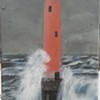
NEW WINDOW GALLERY-Pat Rhea-ACRYLIC PAINTINGS-April 05-30 2024 VALDESE, NC 28690 @ New Window Gallery/Play It Again Records
- Through April 30, 12 p.m.
-
An Evening With Phil Rosenthal Of "Somebody Feed Phil" @ Knight Theater
-
Kountry Wayne: The King Of Hearts Tour @ Ovens Auditorium
-
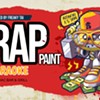
Trap & Paint + Karaoke @ Zodiac Bar & Grill
-
Halloween Guide 2016
31 spooktacular things to do in the Q.C.
-
Halo 4 earns critical hallelujahs
Plus, news on Mass Effect Trilogy, LEGO: The Lord of the Rings
-
Jessica Moss Makes the Gantt Center a Safe Zone for Local Artists 2
Flipping the script

